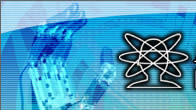

|
Current Group |
|||||
|
Past Group |
|||||
|
Others |
|||||
 |
|||||
 |
 |
 |
||||||||||
 |
|
|||||||||||
No. 1, Sec. 4, Roosevelt Rd., Daan Dist., Taipei, 106319 Taiwan (R.O.C.)
Room 301, Mechanical Engineering Building (TSUNG Cho Chang Hall), NTU
TEL: 02-33664478
Copyright © 2005-2025. Robotics Lab, Department of Mechanical Engineering, NTU. All rights reserved.
Room 301, Mechanical Engineering Building (TSUNG Cho Chang Hall), NTU
TEL: 02-33664478
Copyright © 2005-2025. Robotics Lab, Department of Mechanical Engineering, NTU. All rights reserved.
